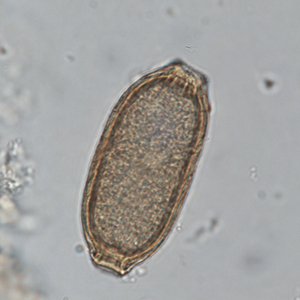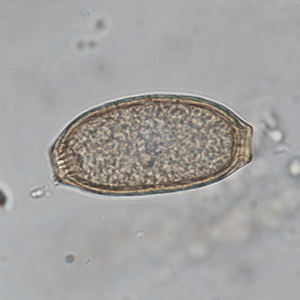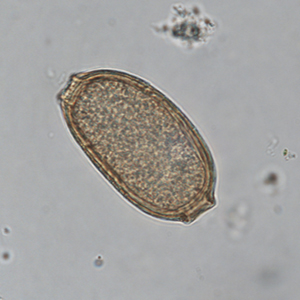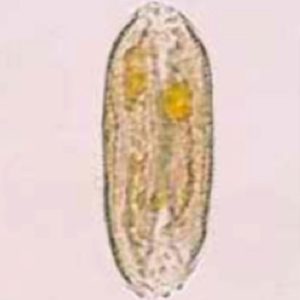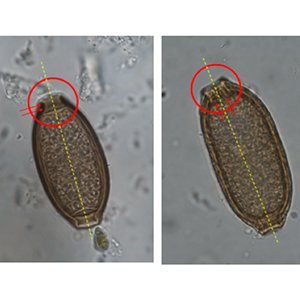Capillariidae is a family of nematodes belonging to the Trichinellida order. Several genera of capillarids have been reported in non-human primates, namely Capillaria, Aonchotheca, Eucoleus and Paracapillaria. Three species of capillarids stand out due to their strict digestive tropism, and are therefore the ones most often found in the feces of non-human primates:
- Capillaria brochieri;
- Aonchotheca annulosa;
- Paracapillaria philippenensis.
Epidemiology
Capillarids have a cosmopolitan distribution and can affect both Old and New World Monkeys, as well as Great Apes (Strait et al., 2012):
- Capillaria brochieri has been reported in chimpanzees (Pan troglotydes) and in several species of New World Monkeys (Strait et al., 2012);
- Paracapillaria philippenensis can be found in Asia, Colombia and in the Middle East and has been described in different species of macaques (Macaca fascicularis, Macaca mulatta, Macaca cyclopis) (Strait et al., 2012);
- Aonchotheca annulosa has been reported in Colombian white-face capuchin monkeys (Cebus capucinus) (Moravec, 2001) as well as in Hamadryas baboons (Papio hamadryas) (Umur et al., 2012).
Description
Capillarid eggs are oval, symmetrical, and measure 50 to 80 µm in length and 20 to 40 µm in width. They have a regular and smooth outer membrane. They also present polar plugs, which have a striated insertion site, parallel to the axis of the egg (Garcia, 2021). It is impossible to distinguish different species of Capillariidae parasites using only ovodiagnosis.
Differential diagnosis
Capillarid eggs need to be distinguished from trichurid eggs:
- Capillarid eggs have a sausage-like form, whereas trichurid eggs are barrel-shaped;
- Capillarid eggs’ polar plugs are normally flatter;
- Both capillarid and trichurid eggs present a striated insertion site of their polar plugs. However, these ridges are parallel to the axis of the egg in capillarids whereas they are perpendicular to the axis of the egg in trichurids. This element is the most reliable one to distinguish the two types of eggs.
As for trichurids, iris pollen seeds (Iris spp.) can be confused with capillarid eggs. Although these pollens have the same elongated shape as capillarid parasite eggs and are of similar dimension, their outer membrane is thinner and the tips less pronounced. Their content is also more irregular (Petithory et al., 1995).
Clinical significance
Clinical significance of capillarid infections is poorly documented. However, liver disease like cirrhosis secondary to a Capillaria hepatica infection has been described in non-human primates (Strait et al., 2012).
Prophylaxis and treatment
As some capillarid species are zoonotic, hygienic measures need to be taken in case of diagnosis. There is currently no treatment for capillarid infections in non-human primates.
